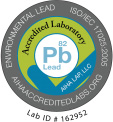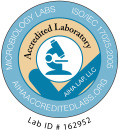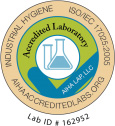 To answer that, first we must explain what an entomopathogenic fungus is. Although, it is a fungus, its quality differentiates it from other fungi. Entomopathogenic fungus is a parasite, most known for killing or seriously disabling invertebrates. In short, it’s a form of insecticide that Mother Nature herself provides.
To answer that, first we must explain what an entomopathogenic fungus is. Although, it is a fungus, its quality differentiates it from other fungi. Entomopathogenic fungus is a parasite, most known for killing or seriously disabling invertebrates. In short, it’s a form of insecticide that Mother Nature herself provides.
How Does This Work?
Usually, this dangerous fungus attaches itself to the outer body of the invertebrate in question, taking the form of microscopic spores. These spores will then germinate, but this will only happen if the conditions are right. That means that extremely high temperature and humidity is necessary to provide ideal growing conditions for any fungus.
After the germination period, spores go through their life-cycle. That eventually leads the germinated hyphae inside the insect’s body cavity. A proliferation process starts inside the host body, where the fungal cells attack and damage the entire working mechanism of the insect.
Pest Control and the Entomopathogenic Fungus
This fungus — unlike others — is no direct threat to humans and is considered environmentally safe. Since the fungus is also a well-known natural mortality agent, there have been interesting worldwide concerns regarding the use and manipulation of the entomopathogenic fungi for control at a biological level of arthropod pests and insects. This is known as “Inundative Biological Control.” That means that the characteristic entomopathogenic fungi can be used against pests and insects by manufacturing insecticides containing this fungus.
Out of all the groups of this fungus, the asexual phases of Ascomycota are particularly under close scrutiny due to the traits that the group possesses. In some countries, mass production is underway of products containing elements of the fungus; and mainly, it is being manufactured as an effective insecticide. Another group of the entomopathogenic fungus — namely Hyphomoycetes, has also been found in a number of commercially produced insecticides, on a global scale.
The main resons behind the mass production ofsuch products revolve around the facts that:
- They have a wide host range;
- They have a long shelf life; and
- Production is easy, as well as is its application and effectiveness.
What Can We Hope For In The Future?
In the recent past, a number of bio-insecticides with the main ingredient of entomopathogenic fungus have been commercially produced and used, But much research still needs to be done regarding the effects the products might have on humans and the eco-system in general.
Furthermore, there’s always room for improvement. That means that extensive research should be done to discover new and better methods of pesticide formulation and implementation, as well as its production and manufacturing processes.
Ultimately, if no adverse effects are found, microbial insecticides should be introduced to all fields of agriculture. They should contribute to improving the delicate balance of forestry and horticulture, as well as provide for sustainable agriculture. Slowly but surely, the use of this insect pathogenic fungus can be integrated into pestmanagement programs, which will no doubt bring benefit to a number of ecological zones.












